We have come a very long way since 1877 when Thomas Edison invented the Phonograph. Ironic then that he was totally deaf in one ear and 80% deaf in the other ear. What would he have made of wirelessly streaming digital data direct to speakers? A wry smile from him no doubt.
So it seems that we move on to a new chapter in audio history whereby the rubicon has been crossed and where we no longer feel the need for any form of physical contact with the media we play, as in vinyl records, magnetic tape and the CD silver disc, so what we have these days is a series of 1’s and 0’s stored inside sealed containers that we cannot even see, much less touch. Again, the irony is that these days we still will say ”X artist has sold X million RECORDS during their musical career”, so when will we say “This artist has sold over 5 million terabytes of data during their career?” Sobering thought and doesn’t QUITE have the same ring to it. I digress.
Raumfeld hail from Germany, was founded in 2008 and at that time concentrated their efforts towards improving the sound obtainable from digital playback, given that MP3 was the prevalent standard at the time. In 2010 they were paired with the speaker manufacturer Teufel, which then allowed them to capitalize on Teufel’s 35 years of loudspeaker manufacturing experience. What we have here then is the fruits of that partnership.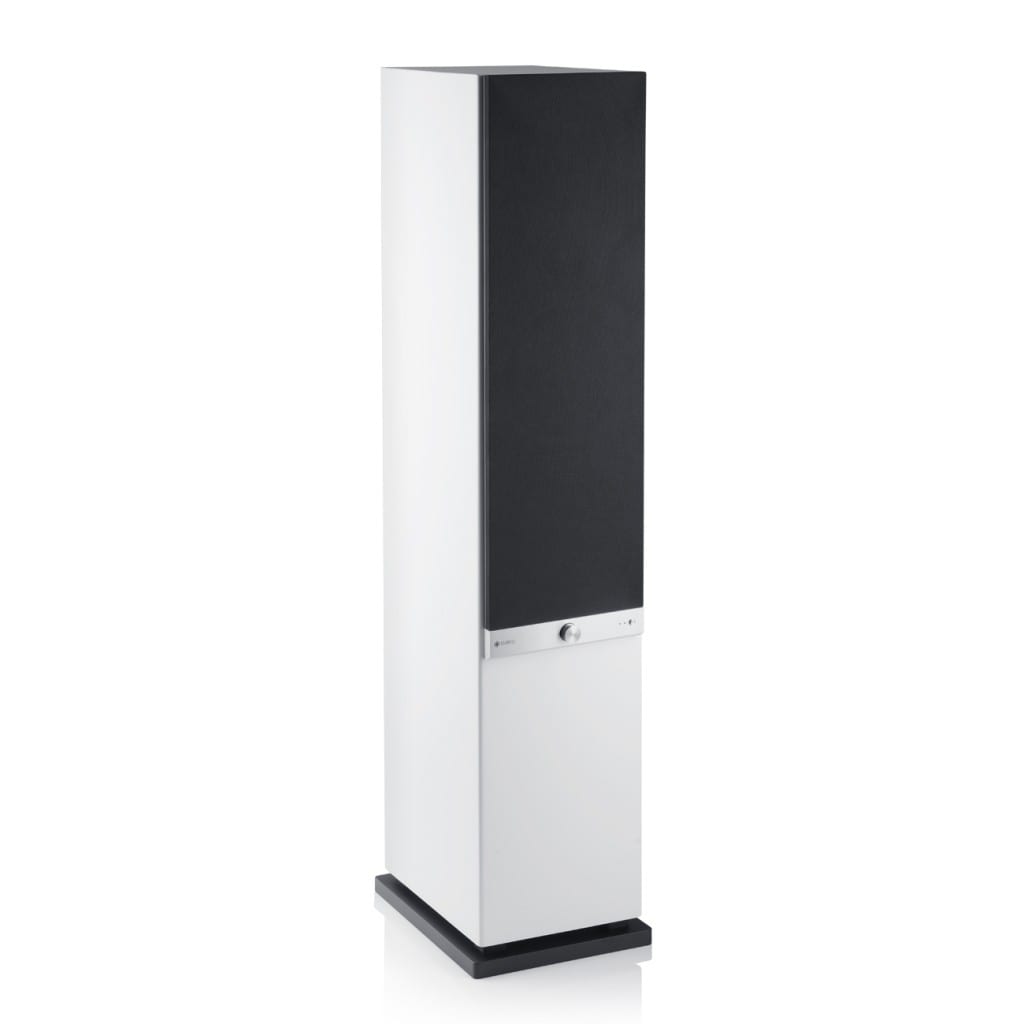
CONSTRUCTION
The Raumfeld Stereo L loudspeaker as it is known, is a large floor stander with some tricks up it’s sleeve. It is a reflex design speaker with a bottom port which exhausts through a gap between speaker cabinet and plinth, with powered speaker drivers, as in the crossovers are directly linked to a pair of power amplifiers housed in the “master” speaker, while the other “slave” speaker is entirely passive with no amplification, although it does house a crossover for the drivers.
You can feed it a digital signal wirelessly, you can directly connect via USB or a pair of RCA inputs a CD player, DAC, TV, DVD player or whatever, which is then controlled by a front panel volume control on the “master” speaker . You can connect your existing amplifier’s speaker connections to the Stereo L’s speaker input posts and treat them as an ‘conventional’ loudspeaker pair, but you must wire them with an additional single length of speaker cable via a dedicated connection betwixt master and slave speakers. Raumfeld supply 5 metres of unterminated speaker cable in the box which I didn’t use at all, but it looked to me inside the plastic bag to be of 1.5mm2 section copper cable.
Setting up the wireless connection was fairly easy and straightforward with a tablet or phone, but using the PC wasn’t easy to be truthful and for me contained a paradox. The instructions called for the master speaker to be connected to the broadband modem with the supplied length of LAN network cable. Oooops, the modem is at the other end of the house and these speakers are no lightweights to go lugging around. Because the modem is so far away, I use a Wi-Fi repeater in my listening room, so throwing caution to the wind I hooked up the speaker to that, which thankfully has a LAN port. To my surprise it worked and one press on the front panel button set the process in motion, indicated by a pair of LEDs which both illuminate when a Wi-Fi connection is established. I could now see that the Raumfeld speaker was registered as a wireless device on my home network, but there was no Windows based software to communicate with the Raumfelds. Both my phone and tablet are Android Wi-Fi enabled devices and it took only a few minutes to download the apps to make them function. The paradox for me was not being able to use my music library stored on the PC with the Raumfelds, yet the tablet and phone had no music libraries and could communicate directly with the speakers. Bother. I had then to spend ages transferring some music files across to the tablet, but then the tablet’s short battery life plagued me during the listening sessions. Purchasers do get a free 3 month subscription to Tidal or you can use the Spotify mobile app for tablets, or Android/iOS Apple products, but sadly not for Microsoft Windows software bases, which also ruled out using my laptop computer. Several people I know also have their music libraries stored on laptop, so I am not alone in lamenting this.
Price at time of review is £1,249.99 plus a free 3 month Tidal subscription and free Wi-Fi repeater for a limited time only.
SOUND QUALITY
My first difficulty to overcome was how I was going to wire up the loudspeaker connections from the output terminals from my amplifier when I didn’t have a spare length to match the resident speaker cables already in my system. I wasn’t going to use any of the speaker cable supplied in the box by Raumfeld, so I settled on a short length of cable from the same manufacturer of my resident cables to link the two Raumfeld speakers, but a model a lot further down in their product range, which wasn’t ideal but the best compromise I could formulate without having a matching set of three identical cables. It did cause a slight imbalance in the sound quality between master and slave’s sound, although if I had the speakers on a permanent basis I would no doubt have remedied that.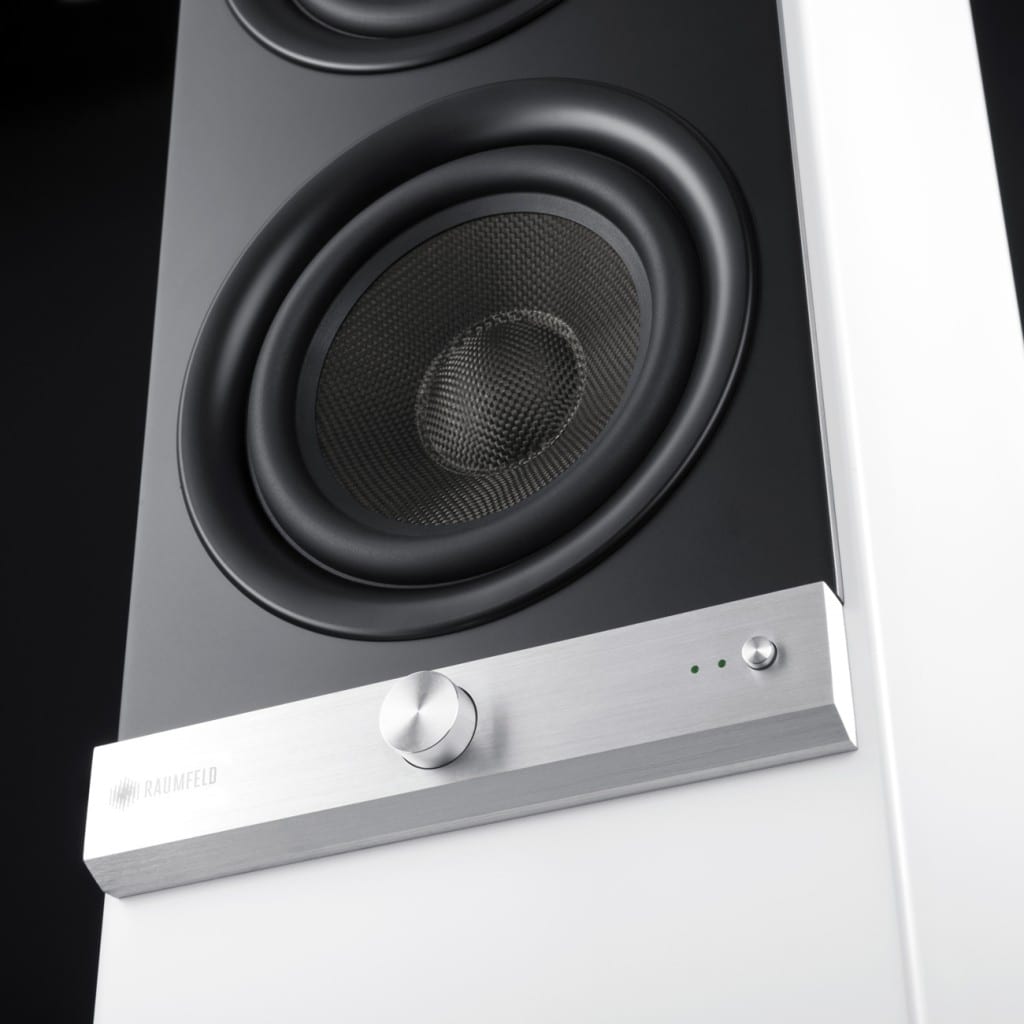
My first foray into the Stereo L’s capabilities was via the speaker direct connections. Given that they are a large-ish speaker, at first hearing they didn’t produce a commensurately large-ish sound, which you might expect. After around 40 hours they loosened up a bit but not by a huge amount and still kept that taut sound from then onwards. There was no mention of how long break-in should be carried out for in the documentation supplied. Overall, they sounded a bit lean to me, with bass that wasn’t quite as fulsome and weighty as was expected for a speaker of this size and driver array, midrange had an innate cleanliness which in isolation was pretty good but lacked warmth and tonality, while the treble was clear and clean, that simply added to the perception of a lack in body and power, even though I had no concerns at all about the treble performance in isolation. You should read that as being “controlled” in the bass registers rather than subdued though, perhaps a little too over controlled. The upside to that is treble and ambience details shone through and imaging acquired an ethereal quality which was enthralling, while transients did seem to have a very clean and fast leading edge.
Next, I connected the CD player’s analogue outputs straight into the RCA line inputs on the Raumfelds. Setting the volume for this connection was passed over to a rotary knob on the master speaker’s front control panel. In an ideal world you would set the volume manually by that volume control, but I have some albums that have loud tracks and quieter tracks which had me up and down from the listening chair quite a few times during an evening’s listening session to crank it up and turn it down accordingly. A loudspeaker and a fitness regime in one!
Then I moved on to feeding the Raumfelds with some digital fodder to chew on, with a USB feed from my DAC. No source selection switch was needed, as the Stereo L has automatic sensing when a music signal was present. Once more the volume level was controlled by the front panel rotary knob and either a remote control or a long stick with a rubber tip would have been very welcome.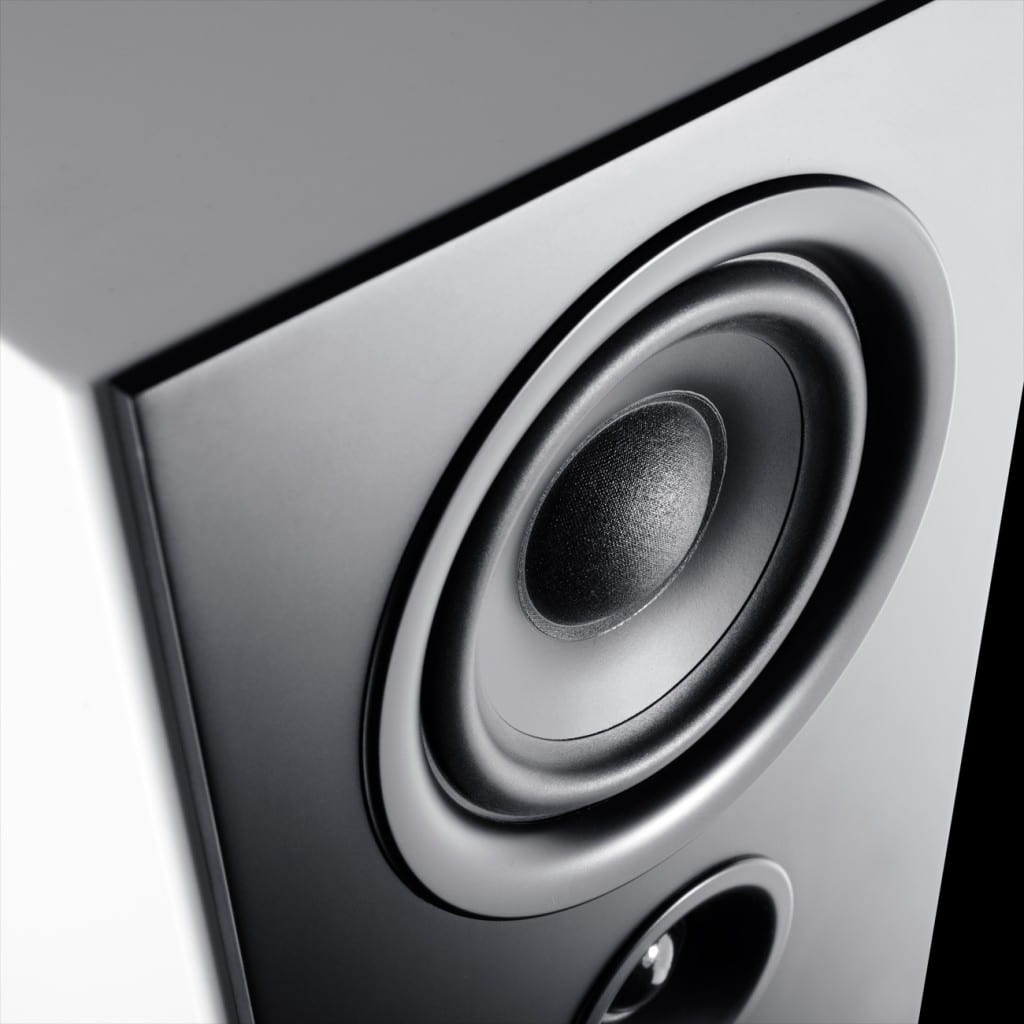
Finally, I fired up my tablet for using the wireless connection . Volume is controlled by a rotary disc image in the Raumfeld software so I could go back to being a couch potato once more. Creating a playlist wasn’t too difficult, as all I had to do was drag and drop the tracks I wanted to hear and away we went.
The best sound I heard was from the DAC and USB connection because my DAC has a healthy bass content which the Stereo L’s benefited from by sounding less taut and lean. Large scale orchestral pieces now had some scale and authority to them and what music didn’t have body and depth via the CD player’s analogue output, suddenly had a modicum more weight and power in the bass.
After some puffing and wheezing I took them into the lounge to hear how they coped with film soundtracks, fed via the DVD player’s analogue outputs, where the clear midband of the Raumfelds helped considerably with actors that mumble or speak with too much nasality (Is there such a word?), while the previously recalcitrant bass output from my evaluation system suddenly blossomed with room filling energy from gunfire, explosions and such-like.
CONCLUSION
I was hoping for a speaker like a Swiss Army knife in the Raumfeld Stereo L’s, having universal connectivity and functionality. Raumfeld have designed the Stereo L speakers to be compatible with iOS and Android devices only so my hopes were dashed on the Swiss Army knife front by excluding Windows connectivity, even though my PC recognised their presence on the Wi-Fi network.
As for the sound, if you are plagued with overblown bass in your listening room, then the Raumfelds could be just the speaker you are looking for. Bass output is very well controlled and not an ounce of surplus fat in the sound to bother or perturb you right up to the lower midband, while the midrange cleanliness may suit your tastes perfectly, whereas it was a tad too cool for me. No quibbles about treble extension and clarity, with imaging and ambience cues rendered very well.
As always, you only have my perceptions here to judge these speakers by and Raumfeld offer free shipping, plus a staggering 8 week trial period and a 2 year warranty with their products so you have plenty of time to evaluate if they suit your musical tastes.
At ££1249.99 I still perceive them to be good value nevertheless, considering they have built in amplification of decent quality and reasonably good connectivity.
Sound quality: 7.9/10
Value for money: 8.7/10
Overall: 8.1/10
Dominic Marsh
























































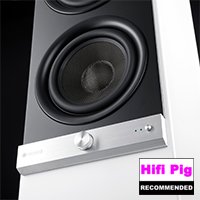
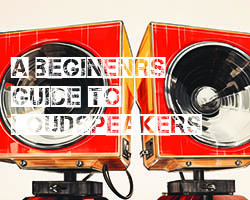


























































































































































You must be logged in to leave a reply.